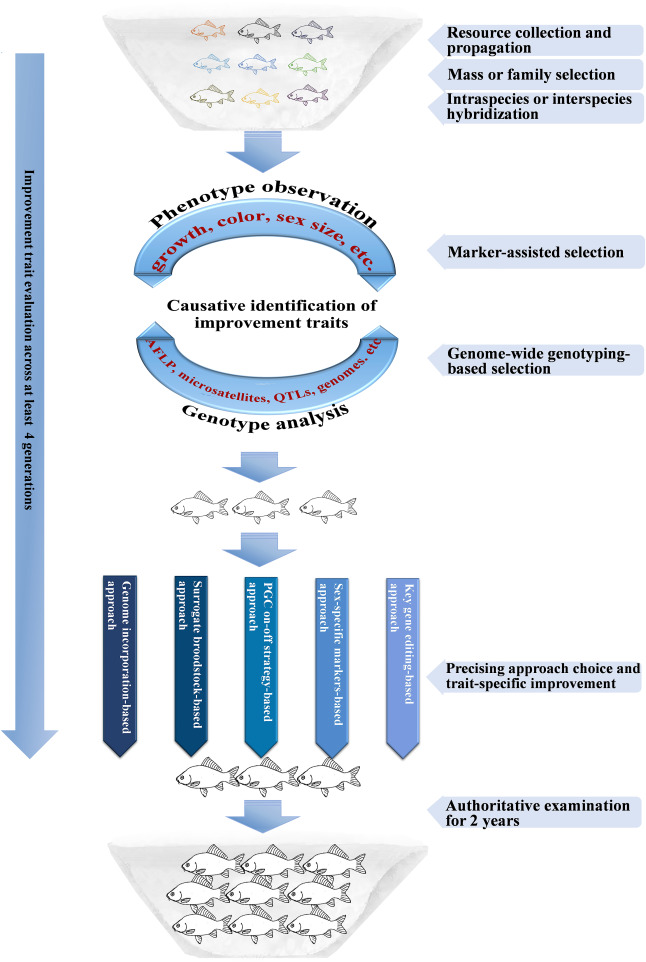
Newsroom
Rethinking Fish Biology and Biotechnologies in Challenge Era for Burgeoning Genome Resources and Strengthening Food Security
The development of fish biology has a history of more than one hundred years. With the advent of the genome era and the demand for global food safety, fish biology and biotechnology have made more significant breakthroughs in the past decade. These breakthroughs have not only promoted major theoretical innovations, but also provided solid technical support for the modern aquaculture industry and the world's fish supply and food security.
Recently, the team led by Prof. GUI Jianfang from the Institute of Hydrobiology (IHB) of the Chinese Academy of Sciences reviewed fish biology and biotechnologies in the challenge era for burgeoning genome resources and strengthening food security. The article was published in the newly created journal Water Biology and Security.
The researchers reviewed research advances of fish biology and biotechnologies in six major areas - biological innovations and genomic evolution of significant fish lineages; evolutionary fates and consequences of natural polyploid fishes; biological consequences of fish domestication and selection; development and innovation of fish breeding biotechnologies; applicable approaches and potential of fish genetic breeding biotechnologies; contributions of genetic improvement on aquaculture seed industry and food security.
They highlighted several outstanding advances on biological innovations, such as the biological innovations of vertebrate water-to-land transition in non-teleost ray-finned fishes, genomic variations of adaptive evolution in northern hemisphere sticklebacks, genomic features of explosive diversification in East African cichlid fishes, and genomic diversification of rapid speciation and adaptations in East Asian cyprinid fishes.
Five precision breeding biotechniques were reviewed in detail, including gene editing for the introgression or removal of beneficial or detrimental alleles, use of sex-specific markers for the production of mono-sex populations, controllable primordial germ cell on off strategy for producing sterile offspring, surrogate broodstock-based strategies to accelerate breeding, and genome incorporation and sexual reproduction regain-based approach to create synthetic polyploids.
Moreover, the researchers also discussed the role of aquatic products in ensuring global food security and the emerging ‘blue foods’ that can improve national nutrition and produce aquatic products with low carbon emissions.
The researchers drew a conclusion that theoretical breakthroughs and technological innovations in fish biology and biotechnology are not only frontier scientific issues that need to pay attention to, but an important driving force for conserving aquatic biodiversity and sustainably developing aquaculture as well.

A basic route diagram of genetic improvement and seed industry development in farmed fishes or other aquaculture animals. (Credit: IHB)